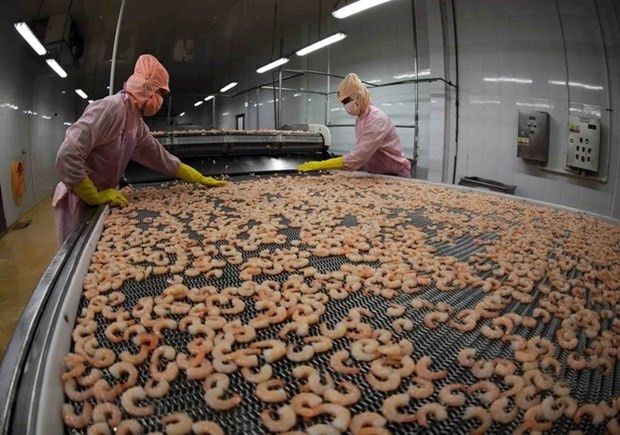
Ho Quoc Luc, General Director of Sao Ta Foods JSC, said Vietnam and Thailand are the leading countries in terms of deep shrimp processing. Thanks to the application of modern technologies, Vietnamese shrimp has managed to maintain its foothold in international markets despite strong competition from low-cost products of Ecuador, India, and Indonesia.
To sustain the foothold and compete with other countries that have lower material production cost, Vietnam's shrimp industry needs to keep optimising its strength in deep processing and diversifying deeply processed products to maintain market share, he opined.
Kim Thu, a shrimp market expert at the Vietnam Association of Seafood Exporters and Producers (VASEP), took the Chinese market as an example where consumers prefer steamed giant tiger shrimp that has eye-catching red. To make quality products whose look suits consumer taste, processing technology plays a great role.
She cited data from VASEP as showing that in the first two months of 2024, Vietnam’s shrimp exports surged 71% year-on-year. Particularly, shipments to China and Hong Kong (China) rocketed by 275% from the same period of 2023.
After investing resources in shrimp, processors and exporters have obtained considerable results. Luc noted that Vietnam’s shrimp industry has emerged and asserted its number-one position in terms of processing. It has gradually dominated demanding markets and high-end segments, especially in Japan, the Republic of Korea (RoK), the US, the EU, and Australia.
The country’s shrimp processing capacity has improved continually with an increasing diversity of products, he remarked.
He went on to say that apart from modern technology, workers' skillfulness is also essential for perfecting products, and this is a strength of Vietnam.
In addition, businesses are also making use of Vietnam’s close geographical proximity with many markets.
Luc noted some companies are concerned that shrimp products from Ecuador and India have better advantages in the US and European markets. However, Vietnam has also boosted exports to Japan and the RoK, which are closer in distance to the Southeast Asian country. Aside from maintaining the market share in the US, the EU, and Australia, shrimp products of Vietnam hold a top place in these two Northeast Asian markets thanks to product design and consistent quality.
Regarding some opinions that Vietnam is “putting all eggs in one basket” when it focuses only on processing and fares worse in other steps, Luc held that any industry has its own risks, and the shrimp industry is bringing into play its competitive edge.
To reduce risks, businesses should avoid overdependence on a single market or a single product, he said.
Besides, global consumers are prioritising green and healthy products. Meanwhile, Vietnam is strong at ecological shrimp farming and diverse recipes for producing healthy ready-to-eat products expected to be highly competitive in both near and far markets, according to Luc./.VNA